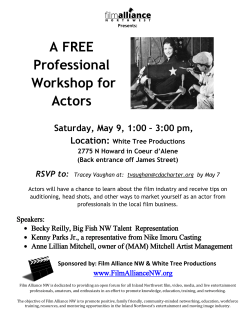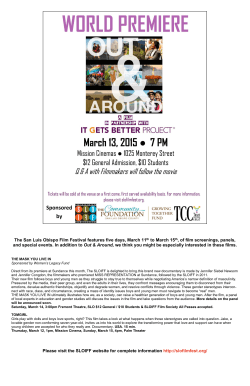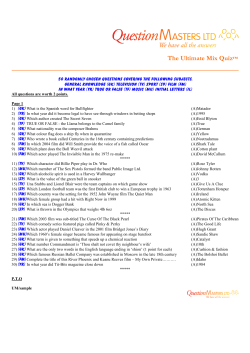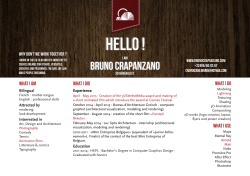
File
Based on a True Story The film The Blind Side is based on a true story. Michael Lewis first wrote the book, The Blind Side – Evolution of a Game, to tell the extraordinary story of National Football League player Michael Oher. It was so gripping and inspirational that John Lee Hancock decided to adapt it for a film. The book had many details about Michael Oher’s life, but only some of them could fit into a film. The director Hancock had to choose which details to leave out. One of the decisions Hancock made was to focus on the relationship between Michael and his adoptive mother Leigh Anne Tuohy. The effect of this is to downplay both the details of Michael's shockingly deprived childhood – though this was partly because Michael himself refuses to talk about it – and the huge contribution made to his welfare by Leigh Anne's husband Sean. Hancock said, “After I read the book I realised that while sports are a major part of the story, there is also a very unconventional mother-son relationship. I was intrigued by this strong woman character, the mother who took in a boy she didn’t even know.” In another interview, he said, “What gripped me was Leigh Anne and Michael, and their affection for one another. I kept thinking that Michael and Leigh Anne were alike. They didn't look backwards, always forwards.” Your notes The film is based on the story of who is a The director of the film is He focussed on Michael had a His adoptive father is Hancock recognised that Leigh Anne Tuohy and Michael Oher both Critical reviews The Blind Side is an extremely likable film where good triumphs over evil, determination and hard work bring their just rewards and a single individual can make a difference to others. Alan Hunter, Express UK … almost overnight he is being absorbed into the family, which has not only an open heart and an open mind, but a serious obsession with football, Ole Miss in particular. What happens next is a testament to the unique people that both Leigh Anne and Michael are. As she begins to piece together the depressing back story of his life, he begins to trust that she will be there for him. These are emotional colours not easy to get to, but they happen here in moving ways because of the chemistry between Bullock and Aaron. She infuses the role with empathy, not pity; he brings an aching vulnerability and an innocence that are remarkable for someone with no formal training. Betsy Sharkey, L.A. Times Adapted from Artemis Resource Four themes of the film include After the First Viewing Answer these questions after the first viewing. They are a good guide as to what to look for as you study the film more closely. How did the film make you feel? Did it make you think? How were your opinions or attitudes changed or reinforced by the film? Which characters did you empathise with? dislike? feel sorry for? 1. What does the film title mean? 2. What are the physical qualities that Michael has that make him so sought after by college coaches? 3. What personal quality does he have that makes him initially ineffective on the football field? 4. When Leigh Anne visits Michael's mother, Denise Oher says that the welfare people called Michael "a runner". What does she mean by that and what does it show about Michael? Why does he not run away from the Tuohy home? Adapted from Artemis Resource The New York Times' film critic A.O. Scott describes The Blind Side as 'a movie made up almost entirely of turning points and yet curiously devoid of drama or suspense'. 5. How many 'turning points' can you identify? Do you agree that the film lacks 'drama' and 'suspense'? If so, what substitutes for these qualities? 6. Michael is enrolled at Wingate along with Steven Hamilton, but we don't see Steven again after scene 9. Why is that? 7. Leigh Anne could get to be really annoying – she is bossy and always right – but the character avoids this. How is it done? 8. When one of Leigh Anne's friends says, "You are changing that boy's life," she replies, "No. He's changing mine." In what way does Michael change her life? 9. What is the function in the film of Alton, the gang leader? Adapted from Artemis Resource Film techniques show how the story is told When we watch a film for the first time, we usually watch for the story; when we see it again, we are more likely to notice how the story is told. However, you may already have noticed some of the striking techniques used. Fill this chart with notes of interesting techniques you remember seeing. Action, dialogue Setting, costume Work with the person beside you to fill up the gaps. Adapted from Artemis Resource Camera work, Sound effects, lighting music Initial Quiz See how many of the following questions you can answer after the first viewing. Some of the questions are minor, some are more significant. Your score will indicate whether you notice and remember details. 1. What is the name of the area in which Michael grew? 2. Why was he taken away from his mother? 3. How old was he when this happened? 4. Who became his legal guardians at this time? 5. Why does he get enrolled at Wingate School? 6. What three things characterise Wingate as a school? 7. In what area did Michael test in the 98th percentile? 8. What kind of shirts does Michael choose when Leigh Anne takes him shopping? 9. What is Leigh Anne's job? 10. What is Sean Tuohy's job? 11. What sport does Collins play? 12. What sport did Sean play at college? 13. What sport did Leigh Anne do? 14. What does SJ say about this? 15. What does SJ's name mean? 16. What does Michael tell Leigh Anne he doesn't like to be called? 17. Michael says to Leigh Anne, "I never had one before". To what is he referring? 18. Why does Michael want a driver's licence? 19. What happens before he is able to get one? 20. From what does Michael protect SJ and prevent serious injury? 21. Who is hired to tutor Michael so he can improve his grades? 22. What grade point average does Michael need for a football scholarship? 23. What grade average does he achieve? 24. Which college do the Tuohys support? 25. What term is used for wealthy supporters of their colleges? Adapted from Artemis Resource
© Copyright 2025











